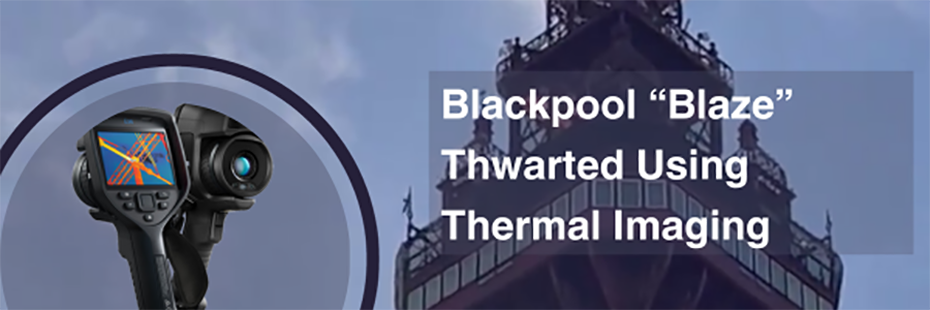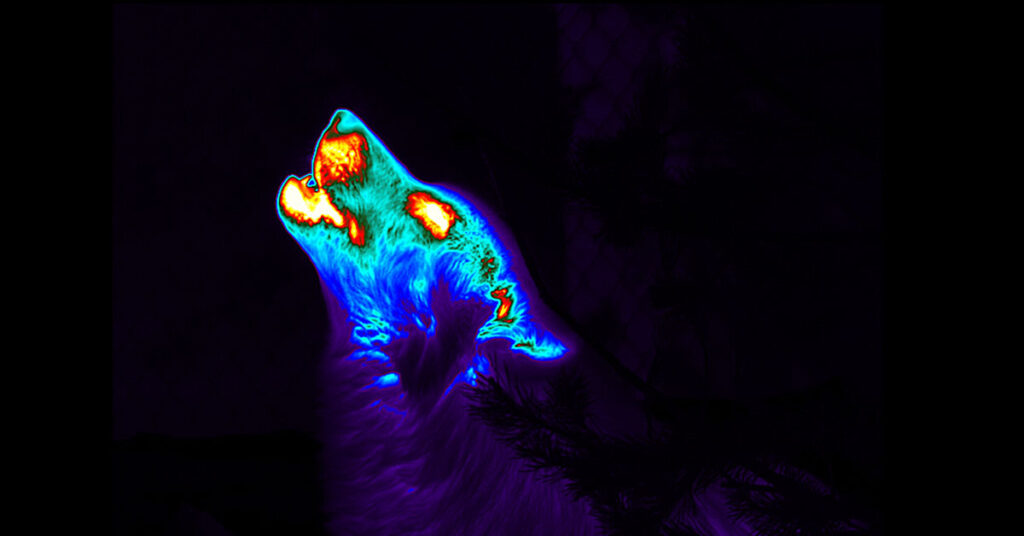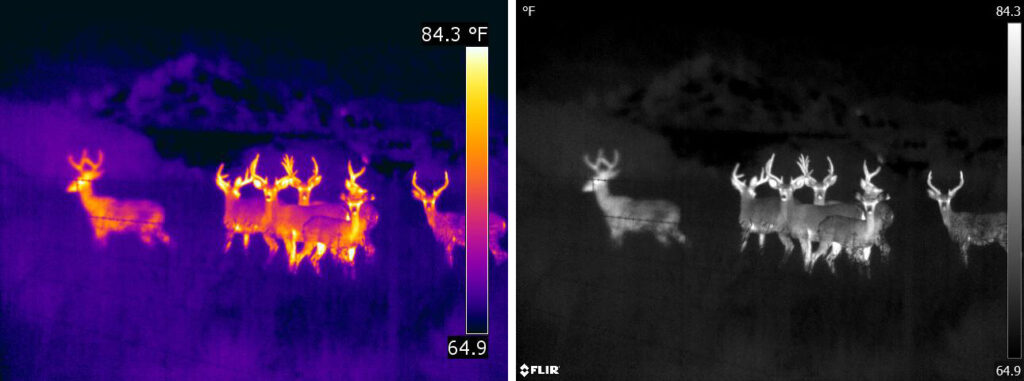
We hope every one of our customers, colleagues, and suppliers enjoyed the Christmas and New Year break. As a gift to you on this, the final night before Epiphany, we would like to tell you about our favourite news story from the festive period. It is a story that perfectly illustrates the efficacy of thermal imaging: Blackpool "Blaze" Thwarted Using Thermal Imaging!
Quick Links
Blackpool “Blaze” Thwarted Using Thermal Imaging!
On the 28th of December 2023, no less than six fire engines, a drone team, a rope rescue team, and the National Police Air Service were called to a suspected fire on the top tier of Blackpool Tower. Concerned citizens alerted the relevant authorities when they spotted orange flames whipping around the 130-year-old structure.[1]
Upon suspicion of a fire, Blackpool Tower was evacuated. However, as the top of the building was closed for renovation, accessing and assessing the suspected blaze was difficult. To understand and address the inferno both the Lancashire Fire and Rescue Service (LFRS) and National Police Air Service flew helicopters over the tower. Using thermal imaging, the National Police Air Service confirmed the LFRS’ suspicion that what appeared as flames to witnesses on the ground was actually orange netting flapping in the wind.
On the afternoon of Thursday 28th December 2023, Lancashire Police released a statement confirming the absence of a fire:
“Our helicopter has flown over the tower and there is no fire. We can confirm what can be seen is orange netting.
One man has been arrested on suspicion of breach of the peace and is being transported to custody.”[2]
A Blackpool Tower spokesperson said of the incident:
“We can confirm that the fire brigade…have established that there is no fire.
Our well-rehearsed emergency procedures were implemented, and we can confirm that what looked like a fire from a distance was in fact lights on a reflective netting surface at the top of the tower.”[3]
How Does Thermal Imaging Work?

Thermal imaging cameras detect heat, otherwise known as thermal or infrared (IR) energy. As everything in the world emits thermal energy no matter how cold the object (therefore including ice), thermal cameras can build a picture of a scene by mapping the intensity of IR radiation across an area. The hotter an object or target is, the more infrared energy it emits. Therefore the more intense its heat signature and vice versa. To indicate the difference between heat signatures across a scene, thermal images are coloured using a palette that intensifies as the heat signature increases. Thermal imagers are very sensitive to differences in temperature/thermal energy; for example, some can detect heat differences as slight as 0.01°C. Consequently, they will display even the smallest differences in heat signature.[4]

Predictably, fire emits a great deal of thermal energy while orange netting does not emit anywhere near the same level of infrared radiation. This meant that the National Police Air Service could tell instantly from the weak heat signature that a fire was not present at the top of Blackpool Tower.
Thermal cameras work within the IR range of the electromagnetic spectrum; because of this, they are not reliant on good lighting conditions to function. This makes them perfect for use in smoky environments and complete darkness. As a result, thermal cameras have a broad range of uses including:
- Surveillance and military operations
- Building inspections (moisture, insulation, roofing, etc)
- Firefighting
- Law enforcement
- Search and rescue
- Automotive checks and repairs
- Skin temperature screening
- Industrial inspections
- Research and development
- Conservation and ecology[5]
Further Information
For more information about how thermal imaging cameras can help you in your daily operations, or for advice regarding our comprehensive range of thermal cameras, including models by leading manufacturers such as Teledyne FLIR and Hikmicro, please contact our Sales team on 01642 931 329 or via our online form.
In the meantime, please browse our extensive selection of thermal imagers here.
Discover Our Range of Thermal Imaging Cameras
You can also find additional examples of thermal imaging applications, as well as advice, on our blog.
Consult Our Blog Series on Thermal News & Advice
[1] All information about this news story was gathered from the following sources:
- BBC News, Blackpool Tower ‘fire’ was fluttering orange netting, last accessed 05 January 2024.
- Guardian News, Blackpool Tower ‘fire’ turns out to be flapping orange fabric, last accessed 05 January 2024.
- Sky News, Blackpool Tower ‘fire’: Police helicopter using thermal imaging discovers ‘blaze’ is actually just orange netting blowing in the wind, last accessed 05 January 2024.
[2] Sky News, Blackpool Tower ‘fire’: Police helicopter using thermal imaging discovers ‘blaze’ is actually just orange netting blowing in the wind.
[3] BBC News, Blackpool Tower ‘fire’ was fluttering orange netting.
[4] Teledyne FLIR, How Do Thermal Cameras Work?, last accessed 05 January 2024.
[5] Teledyne FLIR, How Do Thermal Cameras Work?


